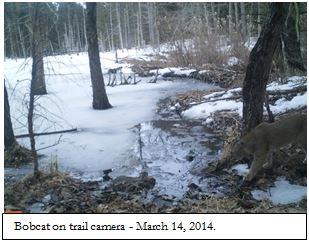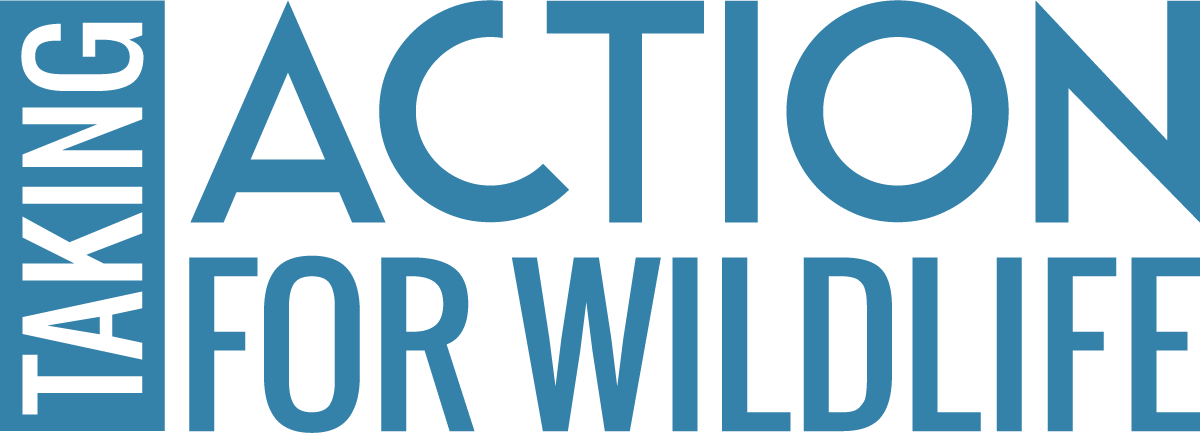Lessons Learned from a Trail Camera
I sat at my desk, eyes glued to my computer screen, flipping slowly through photos. I’m giddy with excitement, enjoying the scenes unfolding, snapshot by snapshot, in front of me. A beaver makes its way out of the pond and passes next to the camera, then in the next shot, I see it is pulling a shockingly large log behind it. I’ve seen the evidence of beaver’s work so many times, it barely catches my attention anymore, but there is something magical about seeing pictures of the animal at work. I love seeing how it maneuvers with such a large branch, observing what time of day or night they are active, how many times they make the trip back and forth. I continue flipping, photo after photo. Then suddenly, something unexpected pops into the photo. I let out an audible squeal. A bobcat!
I was fortunate enough to receive a trail camera for my birthday a few months ago. Since then, I’ve been placing it in various locations on Southeast Land Trust properties for anywhere from 1-4 weeks at a time. The photos and videos I’ve captured have been amazing, but honestly they’ve only been half the fun.
In the same location where I caught photos of beaver and bobcat, I also caught one of a woman with her two dogs crossing the beaver dam. I came to learn that this woman was a neighbor of the Kelliher property, who had two trail cameras of her own placed at a beaver dam upstream. After an introduction by Phil Auger, Southeast Land Trust’s Property Manager, I met with her and we poured over her trail camera photos and videos for well over an hour. She showed me footage of deer, river otters, muskrats, beavers, wood ducks, great blue herons, a hawk, coyotes, raccoons, and more bobcats. She definitely has her camera on a wildlife super highway. Through her footage, I learned that there are at least three individual bobcats on the property, which is a higher number than I would have expected. I also learned that despite many, many failed attempts at finding their tracks this past winter, there are river otters using the beaver ponds there too. But mostly, I learned that the land trust is lucky to have a neighbor who has formed a deep connection with one of our properties. She regularly walks the land and has become passionate about her trail cameras and documenting wildlife there. The information she has collected will help inform the land trust’s management decisions on the property, and also gives them a story to tell that will hopefully connect more people to their land.
I’m surprised that my trail camera has provided not only a connection to wildlife, but also connections to people. Since I’ve started using the camera, I’ve brought friends out with me to place the camera so they could share in my excitement at the resulting photos, and I’ve struck up some great conversations with folks in the woods about the trail camera and what I’ve been seeing. I even attended a nearby presentation about trail cameras where I met some fellow enthusiasts and learned some great tips.

I don’t know why this lesson surprises me every time, as it’s something I know in my core and regularly share with others as part of my job: it’s all about people. Conserving land, managing forests, supporting local agriculture, protecting water quality, enhancing wildlife habitat, protecting rare wildlife – none of it is possible without connecting with people and providing opportunities for people to connect with nature.
Next time you cross paths with someone on a walk on your favorite local lands, strike up a conversation. You might learn something new! Bring along a friend on your next adventure to the outdoors. They might notice something new, and you may be introducing them to a place they’ve never been. Take some pictures on your next stroll through the woods. Share them with your friends. Get out and connect with nature AND with people. And whatever you do, be sure to smile at the trail camera.


